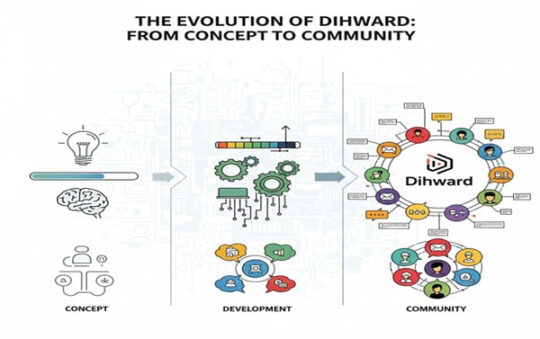Acamento isn’t just an event—it’s a celebration of culture, heritage, and community. From bustling city festivals to quiet village ceremonies, this tradition connects people through shared customs and meaningful rituals. Whether you’re curious about its origins, eager to explore its modern adaptations, or want to understand how it shapes cultural identity, this guide has you covered. Let’s dive into the vibrant world of Acamento and see what makes it so remarkable.
Contents
What Exactly Is Acamento?
Acamento is more than a celebration; it’s a reflection of identity and community. Across the globe, it refers to cultural events that honor traditions, milestones, and collective experiences.
Here’s what makes it special:
-
Connection and Unity: These gatherings bring people together, fostering a sense of belonging.
-
Cultural Expression: Music, dance, food, and storytelling are central to each celebration.
-
Milestone Celebrations: Acamento often marks important life events like births, marriages, and harvests.
-
Generational Bonding: Traditions are passed down, keeping cultural heritage alive.
Whether it’s a lively street festival or an intimate family ritual, Acamento provides space for joy, reflection, and the celebration of shared identity.
The Origins and History of Acamento
The roots of Acamento stretch back centuries. Many historians believe it began as a rite of passage, symbolizing transitions in life, such as coming of age or entering adulthood.
Agricultural cycles played a significant role in shaping these early celebrations:
-
Communities performed rituals to honor fertility and ensure successful harvests.
-
Offerings and ceremonies often centered on gratitude for nature’s abundance.
-
Local deities or ancestral figures were frequently acknowledged through symbolic acts.
As trade routes and migrations expanded, elements of Acamento crossed borders. This exchange created new regional variations while preserving the core themes of unity, community, and celebration. Over time, modern interpretations emerged, blending historical significance with contemporary cultural values.
How Different Cultures Celebrate Acamento
Acamento takes on unique forms depending on the culture and region:
Brazil
In Brazil, Acamento merges seamlessly with Carnival-style festivities. Streets come alive with vibrant costumes, rhythmic music, and energetic dance. The celebrations are as much about heritage as they are about creativity and joy.
Africa
In many African communities, Acamento emphasizes communal bonding. Drumming, storytelling, and shared meals highlight togetherness and continuity. These gatherings strengthen social ties and affirm cultural identity.
Asia
In countries like India, Acamento often includes spiritual rituals. Offerings to ancestors or deities reflect respect for lineage, and ceremonies may incorporate chants, prayers, or symbolic gestures that honor tradition.
Despite these differences, every celebration centers on the same principles: connection, cultural pride, and shared joy. From elaborate parades to intimate ceremonies, Acamento thrives as a reflection of local values and global unity.
Traditional Rituals and Practices
Rituals are the heartbeat of Acamento. They vary by region but share common threads:
-
Music and Dance: Drumming, singing, and choreography often accompany ceremonies, creating immersive experiences.
-
Food and Feasting: Traditional dishes symbolize abundance and communal joy, turning meals into celebrations of heritage.
-
Storytelling: Elders share tales that preserve history, morals, and cultural identity.
-
Crafting and Decorations: Handmade ornaments or ritual items connect participants to community traditions and ancestry.
These practices not only entertain but also reinforce values and strengthen social cohesion. Each ritual carries layers of meaning, making Acamento a deeply enriching experience.
Modern Adaptations of Acamento
Acamento has evolved alongside society while retaining its essence. Technology and urbanization have influenced how it’s celebrated today:
-
Virtual Celebrations: Families separated by distance can participate in rituals via video calls or live streams.
-
Social Media Influence: Platforms like Instagram and TikTok showcase vibrant festivals, inspiring younger generations to engage creatively.
-
E-Commerce Crafts: Artisans sell traditional crafts online, promoting awareness and supporting local economies.
-
Workshops and Classes: Urban centers host events where participants can learn about Acamento firsthand, fostering cultural exchange.
These modern adaptations allow traditions to reach new audiences while staying relevant in changing times.
The Impact of Globalization on Acamento
Globalization has brought both opportunities and challenges for Acamento:
-
Cultural Fusion: Music, dance, and attire may blend traditional and modern elements, appealing to younger audiences.
-
Risk of Dilution: Some traditions may lose authenticity if global trends overshadow original practices.
-
Increased Awareness: Social media spreads knowledge of Acamento worldwide, sparking curiosity and appreciation.
-
Cultural Exchange: Cross-border interactions enrich celebrations while highlighting the importance of preserving core values.
Balancing tradition and innovation is essential. Communities are finding ways to embrace change without compromising the spirit of Acamento.
Also Read : Unveiling the Secrets of AmateurAllure: Tips for Newcomers
Preserving Cultural Significance
Safeguarding the essence of Acamento is crucial for future generations:
-
Local Festivals: Serve as hubs for storytelling, music, dance, and ritual, keeping traditions alive.
-
Education and Workshops: Teach traditional arts, helping youth connect with their heritage.
-
Digital Preservation: Online platforms document rituals, crafts, and performances, ensuring global accessibility.
Through these efforts, Acamento continues to thrive as both a living tradition and a cultural touchstone. Communities remain committed to passing down knowledge while adapting creatively to new contexts.
Why Acamento Matters
Acamento is more than festive gatherings; it represents identity, belonging, and continuity.
-
Strengthens Community: Celebrations bring people together across generations.
-
Honors Heritage: Rituals preserve customs and values that define cultural identity.
-
Encourages Creativity: Music, dance, crafts, and storytelling inspire artistic expression.
-
Promotes Global Understanding: Exposure to different forms of Acamento fosters cross-cultural appreciation.
These elements make Acamento a dynamic, living practice that connects the past with the present and future.
Conclusion: The Timeless Charm of Acamento
Exploring Acamento reveals its depth and diversity. From lively parades in Brazil to quiet ancestral rituals in Asia, every celebration reflects a community’s values, history, and spirit.
Modern adaptations and globalization have expanded its reach, creating opportunities for learning, engagement, and creativity. Yet, the heart of Acamento remains the same: connection, heritage, and joy.
Preserving and sharing these traditions ensures that they continue to inspire and educate. Acamento is a testament to how cultural practices can evolve while honoring the past, offering a timeless reminder of the power of community and shared experiences.
Whether you witness it firsthand or experience it through stories, music, and digital platforms, Acamento continues to capture imaginations across generations, inviting everyone to celebrate, connect, and cherish their roots.




